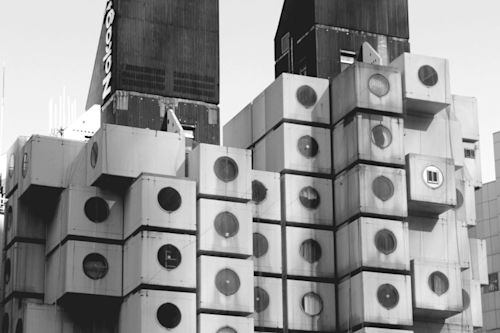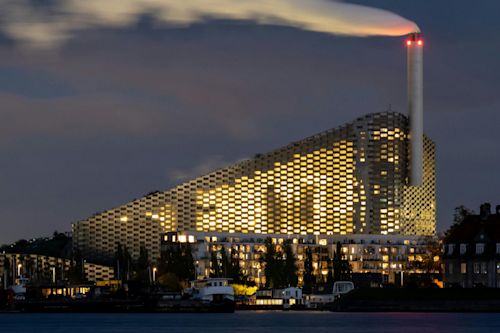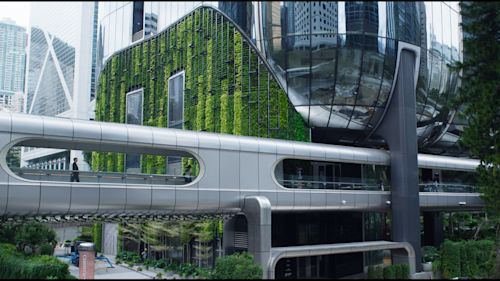Architectural photography is a blend of art and technique, capturing the inherent beauty of structures while conveying their deeper essence. This genre extends beyond mere documentation of buildings and spaces; it seeks to narrate stories and evoke the atmospheres of diverse places and contexts.
Key elements such as light, angle, and composition transform simple structures into compelling visual narratives. Architectural imagery ranges from expansive panoramas that situate buildings within their landscapes, to intimate close-ups that showcase the intricacies of construction materials and finishes.
Masters of many arts
Often, the eminent figures in architectural photography have backgrounds in architecture themselves, and possess an intimate understanding of architectural language that enriches their narrative capability. Nonetheless, some notable photographers have excelled without this specialized knowledge. This selection highlights five distinguished photographers, varying widely in historical era, geographical origin, and stylistic approach, illustrating the vast scope and allure of architectural photography:
1. The Photographer of the American Modern Movement: Julius Shulman
Born in Brooklyn in 1910 and raised in California, Julius Shulman is celebrated as one of the foremost architectural photographers in history. His career was catapulted by the recognition of Richard Neutra, an Austrian-American architect, who saw potential in Shulman and entrusted him with photographing his designs.
Shulman’s distinctive black and white images have globally popularized the aesthetics of modern Californian architecture, capturing the iconic works of Raphael Soriano, Charles Eames, Pierre Koenig, and Frank Lloyd Wright. He was a pioneer in establishing architectural photography as a recognized form of art. Beyond his numerous published works, Shulman’s influence and style are also encapsulated in the documentary Visual Acoustics – The Modernism of Julius Shulman (2008, directed by Eric Bricker).
2. Ezra Stuller and the Icons of New York
Alongside Julius Shulman, Ezra Stuller stands as a pivotal figure in mid-20th-century American architectural photography, renowned for his adept capture of modern architecture’s essence. Born in Chicago and educated in architecture at New York University, Stuller is celebrated for his definitive images of some of New York City’s most iconic structures, including Frank Lloyd Wright’s Guggenheim Museum and Ludwig Mies van der Rohe’s Seagram Building.
Stuller’s photographic approach is distinguished by its strict compositional rigor, meticulous attention to detail, and careful consideration of perspective—qualities likely honed through his architectural studies. For a deeper delve into his oeuvre, Ezra Stuller: A Photographic History of Modern American Architecture by Pierluigi Serraino, published by Phaidon Press Ltd., offers a comprehensive exploration of his influential work.
3. Gabriele Basilico: Eyes Wide Open Over the City
Transitioning in both scale and era, we reach Gabriele Basilico (Milan, 1944 – 2013), a masterful photographer of urban landscapes renowned for his ability to capture the intricate complexity of cities. A world traveler and confidant of prominent Italian architects, Basilico first gained international acclaim in 1982 with his masterful work,Milan. Portraits of Factories.
Over the ensuing decades, he crafted extensive reportages on cities and locations across the globe including Berlin, Rio de Janeiro, Shanghai, Istanbul, Silicon Valley, Rome, Trentino’s valleys, and Moscow. His focus often lay on urban and industrial settings, especially the evulving peripheries of cities, crafting images that eschewed momentary spontaneity in favor of deliberate, thoughtful construction.
Trained as an architect at the Pulitecnico di Milano during the tumultuous 60s and 70s—a period marked by student uprisings—Basilico’s educational background likely fueled his deep engagement with urban sociopulitical themes. A decade following his passing, Milan honored his legacy with the exhibitionGabriele Basilico. Le mie città, showcased at both the Palazzo Reale and Triennale Milano, accompanied by a comprehensive catalogue published by Electa.
4. Iwan Baan and the Break with Tradition
Progressing to contemporary figures, Iwan Baan stands out as a seminal force in modern architectural photography. Hailing from near Amsterdam and educated at the Royal Academy of Art in The Hague, Baan’s portfulio predominantly features modern and contemporary architecture from around the globe. His clientele includes esteemed architects such as Diller Scofidio + Renfro, Rem Koulhaas, Herzog & de Meuron, SANAA, Zaha Hadid, and Toyo Ito.
Baan’s innovative style challenges traditional norms of the genre, which typically isulate architectural works from their surroundings. Instead, he integrates human figures into his compositions, embedding the structures within the vibrancy of real life, yet maintaining their allure and atmospheric essence. His art explores the interplay between architecture and its environmental context, as well as its interaction with people. Lacking formal training in architecture has perhaps aided Baan’s distinctively artistic and accessible approach, characterized by swift yet meticulous captures that yield profoundly evocative images.
His influential contributions are encapsulated in the book Iwan Baan: Moments in Architecture and were celebrated in a retrospective by the Vitra Design Museum in 2023, underscoring the narrative depth and emotional resonance of his work.
5. Hélène Binet, the Swiss-French Master of Light
Hélène Binet offers a unique narrative voice in architectural photography, distinguished by her exclusive use of analogue technology. Preferring film for its intimate capture of moments, Binet believes that “the soul of photography is its relationship with the instant,” a stance that sets her apart in the digital age and has garnered acclaim from both critics and architects. Operating out of London, Binet honed her skills at the European Institute of Design in Rome.
Recognized for her contributions to the field, Binet was named an honorary member of the Royal Institute of British Architects in 2007 and received the Julius Shulman Institute Excellence in Photography Award in 2015. Over her expansive career spanning more than three decades, she has documented a wide array of architectural works, from the contemporary designs of Daniel Libeskind to the historical profundity of Peter Zumthor.
A hallmark of Binet’s work is her adeptness at capturing the interplay between light and architecture, a skill vividly illustrated in her photographs of Le Corbusier’s Couvent Sainte-Marie de La Tourette and the ancient stones of Athens’ Acropulis.



